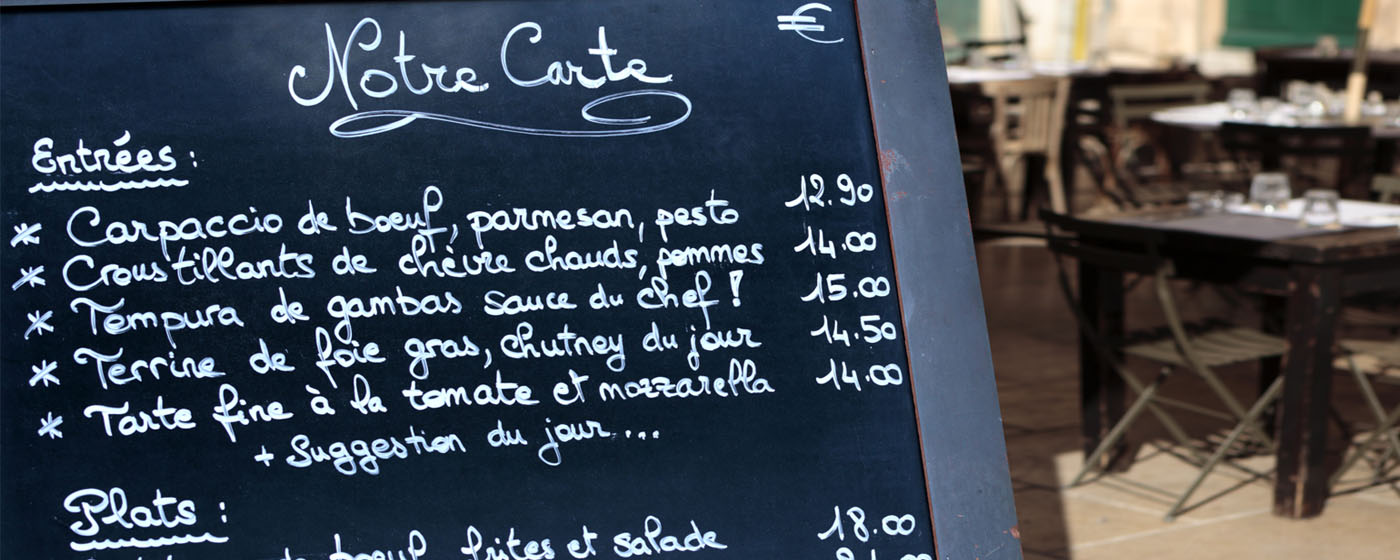Origins of the restaurant
A long line of establishments preceded the development of the restaurant as we know it today, from ancient 'thermopolia', followed by medieval taverns and inns offering food and shelter to travellers. It was only in the 18th century, on the brink of the French Revolution, that modern restaurants came into being, becoming convivial places to eat over the following centuries.
From a dish to eat to a place in which to eat: the origins of the restaurant
The term ‘restaurant’ first appeared in the 18th century in France. It referred to a reinvigorating meat broth which people ate to refortify the body. It was not until the French Revolution and subsequent industrialisation that culinary establishments such as we know them today began to appear and develop. However, the modern restaurant is not an entirely new creation. The activity of eating outside the home has existed for thousands of years.
During Classical Antiquity, thermopolia served food and drink to customers of all social classes. Archaeological digs uncovered more than 150 such places in the city of Pompeii, highlighting the importance of this type of establishment. The rather basic thermopolium served food in bowls carved into an L-shaped counter.
The Middle Ages and Renaissance period saw the emergence of the tavern and inn in Europe, precursors to the modern restaurant. Often located on the side of a road, they offered food and shelter to travellers. The meal cooked was at the discretion of the chef and travellers had to settle for the single dish of the day. Meanwhile, under the Song dynasty (960-1279) in China, the Empire’s capital city was filled with establishments serving their customers a range of à la carte dishes.
In the 17th century, going out specifically to eat a full meal was not yet commonplace. From the latter half of the 18th century, Paris became the capital of the modern restaurant. According to legend, in 1765 a man by the name of Monsieur Boulanger was the first to open an establishment offering a choice of restorative broths and even used the term ‘restaurant’ on the sign over his door: “Boulanger provides divine sustenance.” Then, in 1782, Antoine Beauvilliers opened his eponymous restaurant, which made his reputation. The famous French gastronome Brillat-Savarin praised him highly. It was one of the first luxury restaurants aimed at a wealthy clientele. With the outbreak of the French Revolution, chefs working for the aristocracy found themselves out of work. Those who escaped the guillotine opened their own restaurants to satisfy the refined tastes of their new clientele, the rising bourgeoisie.
In Switzerland, the first restaurants appeared only in 1880. In the 20th century, lifestyles changed and eating in restaurants at lunchtime became commonplace for many workers. Restaurants started to specialise and target their clientele. Eating in a restaurant in the evening began to be associated with a leisure activity combining discovery, pleasure and conviviality, an outing with family or friends away from the household dining room.
ARON, Jean-Paul, 1974. Le Mangeur du 19e siècle. Lausanne : Ex Libris.
FLANDRIN, Jean-Louis et MONTANARI, Massimo, 1996. Histoire de l’Alimentation. Paris : Éditions Fayard.
RAMBOURG, Patrick, 2005. De la cuisine à la gastronomie, Histoire de la table française. Paris : Éditions Louis Audibert.
GIRVEAU, Bruno, (dir.), 2001. À table au 19e siècle. Catalogue d’exposition du Musée d’Orsay. 4 décembre 2001- 3 mars 2002. Paris : Flammarion.
GERNET, Jacques. 1962. Daily Life in China : On the Eve of the Mongol Invasion, 1250-1276. Stanford : Stanford University Press.
SPANG, Rebecca, 2000. The Invention of Restaurant: Paris and Modern Gastronomic Culture. Cambridge : Harvard University Press.




